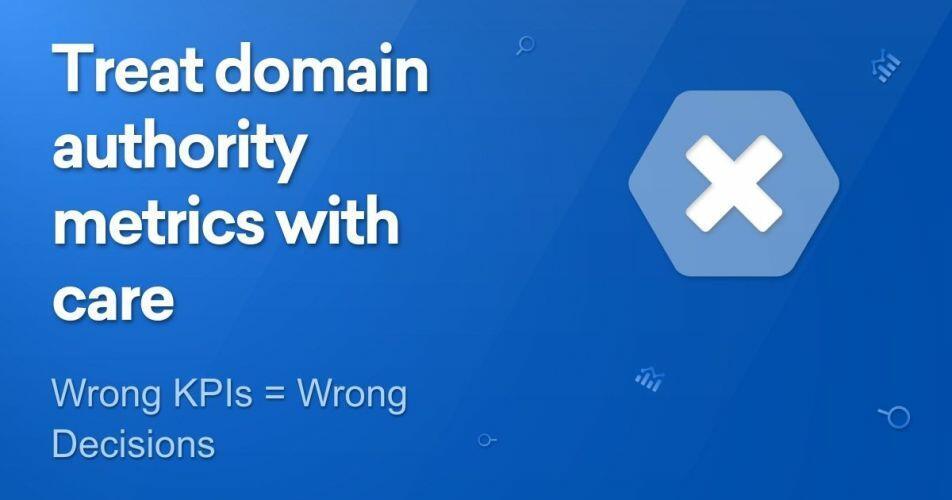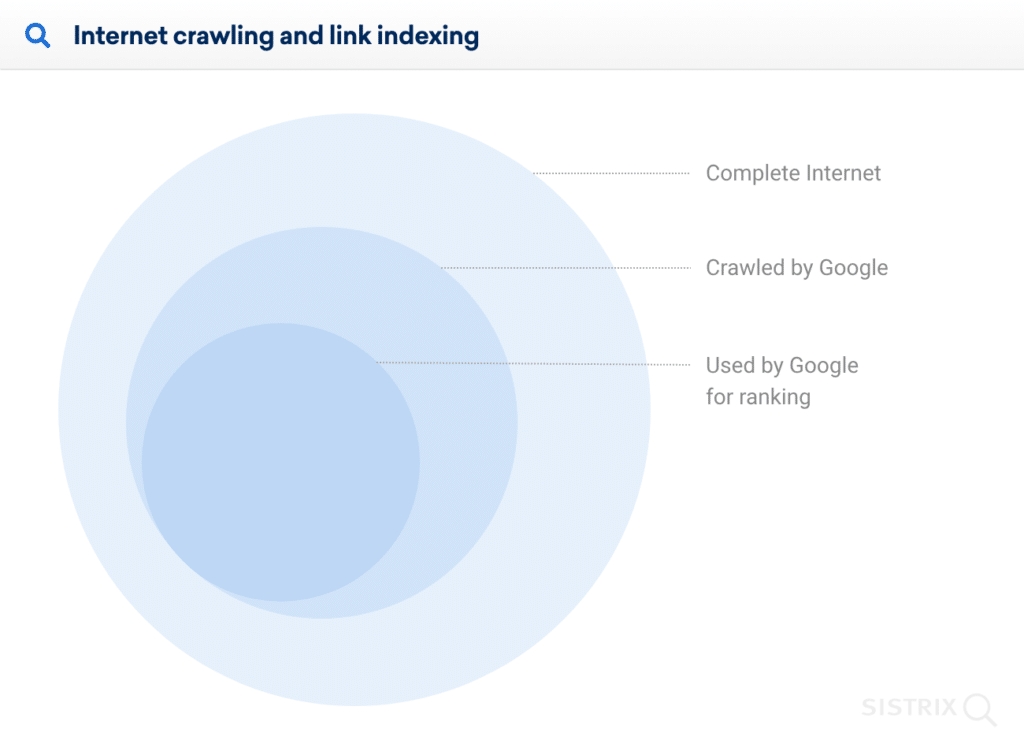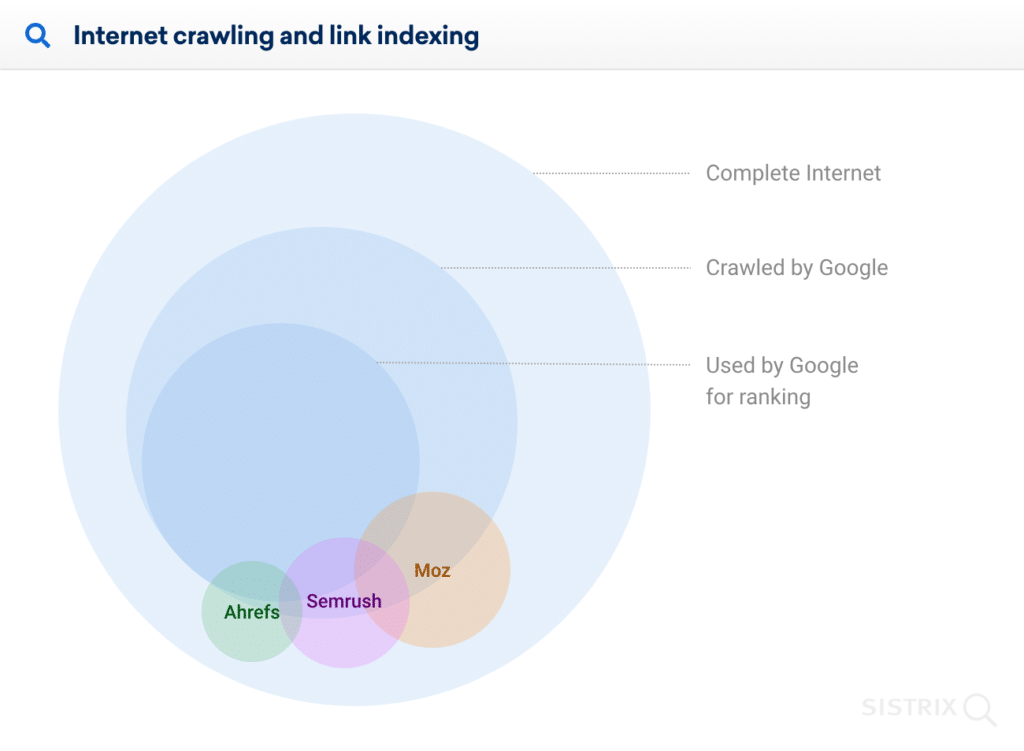The craziness surrounding SEO metrics scores these days! It’s like website owners and digital marketers have lost their minds, obsessing over pointless numbers like the MOZ Domain Authority (DA) score or Ahrefs Domain Rating (DR) score.
They act like these numerical values are the secret sauce to dominating search engines. Wake up, people! The harsh reality is that these scores are more confusing than a Rubik’s Cube at times, and everyone is buying into the hype without really understanding what they mean. It’s like chasing a mirage in the desert, thinking it’s an oasis. Get a grip, folks!
The Illusion of Relevance
One of the primary misconceptions surrounding SEO metrics scores is the belief that a higher score equates to greater relevance or authority in the eyes of search engines, especially Google.
The truth is, these scores are proprietary metrics created by third-party tools like MOZ and Ahrefs, and they do not directly influence how Google ranks websites. (they mean nothing)
Google’s Algorithms Trump All
While SEO metrics scores are indeed valuable for assessing certain aspects of a website’s performance, they are not the holy grail of search engine optimisation.
Google, the predominant search engine, utilises its own complex algorithms to determine a website’s ranking. These algorithms take into account a multitude of factors, including the quality of content, user experience, relevance, and authority – factors that go far beyond the scope of a single numerical score.

Case in Point: DA 10 vs. DA 70
Consider the scenario where a website boasts a MOZ DA score of 10 while another site proudly displays a score of 70. Conventional wisdom might suggest that the DA 70 site is superior, but this is not always the case.
The reality is that a website with a DA score of 10 can be over ten times more powerful and trusted than a website with a DA score of 70.
This discrepancy arises from the fact that SEO metrics scores often fail to accurately reflect the nuances of a website’s authority and trustworthiness.
A lower DA score does not necessarily mean inferior content or relevance; it could simply indicate a smaller, more niche site with a highly engaged and loyal audience.
The Danger of Misplaced Priorities
Obsessing over SEO metrics scores can lead to misplaced priorities instead of focusing on creating high-quality, relevant content that resonates with the target audience. A website owner may find themselves chasing arbitrary score improvements.
This tunnel vision can result in a disconnect between SEO efforts and the actual needs and expectations of users and the information search engines such as Google actually factors in.
Rethinking SEO Strategy
It’s time to shift the focus from chasing after inflated SEO metrics scores to adopting a more holistic approach to search engine optimisation.
Emphasising content quality, user experience, and relevance should take precedence over fixating on numerical scores that lack a direct correlation with Google’s ranking algorithms.
DA-DR-Based Link Building Is A Scam.
The quest for higher search engine rankings has led many businesses to seek the assistance of freelancers and service providers promising the magic formula for success – DA-based link building.
However, a closer examination reveals that this strategy is nothing more than a deceptive mirage, with potential risks outweighing the promised benefits or no seeing any positive results at all.
- The Allure of DA-Based Link Building:
Domain Authority (DA), a metric developed by Moz and DR developed by Ahrefs, has become a focal point for many businesses and marketers looking to enhance their website’s credibility in the eyes of search engines.
Freelancers and service providers exploit this allure by claiming that their DA-based link building services are the secret sauce to achieving top rankings on search engine results pages (SERPs).
2. The Pitfalls of Trusting in DA Alone:
While a high DA score can be an indicator of a website’s authority, relying solely on this metric for link building can be misleading. Search engines, especially Google, use complex algorithms that consider numerous factors when determining rankings.
A high DA, on its own, does not guarantee relevance, quality content, or genuine user engagement – all crucial components in the modern SEO landscape.
3. The Scam: Promising Instant Results:
One of the telltale signs of a scam is the promise of instant results. Freelancers and service providers who advocate for DA-based link building often claim that your website will skyrocket to the top of search results within a short timeframe.
In reality, ethical and sustainable SEO practices take time to yield results, and shortcuts can lead to severe consequences, including penalties from search engines.
4. Quality Over Quantity:
DA-based link building services often focus on quantity rather than quality. A high volume of low-quality backlinks can be detrimental to your website’s reputation and rankings.
Google’s algorithms have become increasingly sophisticated, and they prioritise relevant, authoritative, and organic link profiles. Investing in a multitude of links solely based on DA or DR may result in a link profile that raises red flags with search engines – Ignoring the links completely.
The Danger of Black-Hat Tactics:
In the pursuit of quick gains, some freelancers and service providers resort to black-hat SEO tactics. These unethical strategies, such as buying links or engaging in link farms, can lead to severe consequences, including being penalised or banned from search engine results altogether.
Analysing Sites Beyond DA and DR Scores – Fake Metrics
Link building plays a crucial role in enhancing a website’s authority and visibility. Domain Authority (DA) and Domain Rating (DR) scores are commonly incorrectly used metrics to gauge the credibility of a website.
However, relying solely on these scores can be a risky endeavor, as unscrupulous link-building scammers and guest post sellers often resort to deceptive tactics to manipulate these metrics.
As a result, it becomes imperative for digital marketers, or anyone buying links to master the art of profiling and analysing sites independently before making any link purchase decisions.
The Deceptive Tactics:
1. Fake Metrics Manipulation:
Link sellers might resort to employing strategies to artificially inflate their MOZ DA and DR scores than can include purchasing low-quality backlinks in bulk or engaging in link exchange schemes to create a false illusion of authority. It is crucial to differentiate between genuine, organic growth and manipulated metrics.
2. Temporary Traffic Boosts:
Some scammers resort to temporary traffic boosts using methods like click farms or paid traffic services. While this might temporarily elevate metrics, it does not reflect the site’s genuine authority or relevance within its niche.
Profiling and Analysis Strategies:
- 1. Content Relevance:
Assess the content on the prospective site and evaluate its relevance to your niche. Genuine websites with valuable content are more likely to contribute positively to your SEO efforts.
- 2. Backlink Quality:
Scrutinise the backlink profile of the site. High-quality, diverse backlinks from authoritative sources are indicative of a site’s credibility, whereas an abundance of low-quality links may raise red flags.
- 3. User Engagement:
Consider user engagement metrics, such as bounce rate, time on site, and social media interactions. A site with authentic authority is likely to have engaged and interested visitors.
- 4. Consistency in Metrics:
Evaluate the historical data of a site’s metrics. A sudden spike in metrics might be a sign of manipulation, while steady growth over time is more likely to be authentic.
- 5. Check for Penalisations:
Verify if the site has been penalised by search engines for any violations of guidelines. Penalised sites may pose a risk to your website’s reputation and SEO performance.
Understanding BOTS
Evaluating the caliber of organic traffic proves to be a more meaningful metric than merely tallying the number of organic visits. Consider a scenario where you embark on an SEO campaign for a website boasting 5,000 organic visits per month.
Upon scrutinising the organic traffic quality, you discover that 30% of the traffic originates from bots or fake IP addresses. Communicating this revelation to your SEO client emphasizes that 30% of the traffic holds negligible value, reducing the genuine human traffic to 3,500 instead of the initial 5,000.
After dedicating a quarter to SEO efforts, a 30% upswing in organic traffic is observed. However, upon meticulous examination, it becomes apparent that spam traffic constitutes a part of this increase.
Filtering out this undesirable element reveals a genuine traffic increase of approximately 20%. This underscores the significance of prioritising the measurement of traffic quality over the sheer quantity of organic visits.
It is imperative for SEO practitioners to consistently engage in such scrutiny, ensuring a more accurate representation of organic traffic performance by discounting the impact of spam traffic.
How To Really Increase The Authority Of A Website.
Focusing solely on numerical scores can be a short-sighted approach, and for sustainable growth, a holistic strategy is essential. Here are authentic and effective ways to genuinely enhance your website’s authority and SERP value:
1. Quality Content Creation:
Content remains king. Invest in creating valuable, relevant, and engaging content that addresses the needs and interests of your target audience. Quality content not only attracts organic traffic but also encourages natural backlinks from reputable sources.
2. User Experience Optimisation:
Prioritize user experience by ensuring your website is intuitive, easy to navigate, and mobile-friendly. A positive user experience contributes to longer dwell times, lower bounce rates, and improved search engine rankings.
3. Community Engagement:
Build a community around your brand. Engage with your audience through social media, forums, and other platforms. Foster meaningful conversations, address concerns, and establish a loyal following. Search engines recognise a strong online community as a sign of a trustworthy and authoritative website.
4. Strategic Partnerships and Collaborations:
Collaborate with influencers, industry leaders, and other reputable websites in your niche. Genuine partnerships can lead to quality backlinks, increased brand visibility, and a broader audience reach.
5. Thought Leadership and Expertise:
Position yourself as an industry thought leader by consistently sharing valuable insights, research, and expertise. Contributing to reputable publications and participating in industry events can enhance your website’s credibility.
6. Technical SEO Best Practices:
While avoiding an obsessive focus on metrics, it’s essential to implement fundamental technical SEO practices. Ensure your website is crawlable, has a sitemap, and follows best practices for meta tags, header tags, and other on-page SEO elements.
7. Website Performance Optimisation:
Improve website loading speed and optimise performance. A fast and responsive website not only enhances user experience but is also favored by search engines.
8. Adaptability to Algorithm Changes:
Stay informed about search engine algorithm updates and adapt your strategy accordingly. By keeping abreast of industry trends and adjusting your approach, you’ll be better equipped to maintain and improve your SERP position.
9. Diversification of Content Formats:
Experiment with various content formats such as video, podcasts, infographics, and interactive elements. Diversifying your content not only caters to different audience preferences but can also increase your chances of earning quality backlinks.
10. Transparent and Ethical Practices:
Uphold transparency and ethical practices in all aspects of your online presence. This includes honest and clear communication, ethical link-building strategies, and a commitment to providing genuine value to your audience.
Relying on Domain Authority (Moz), Authority Score (Semrush), and Domain Rating (Ahrefs) may result in misguided decisions.

How are these metrics calculated?
Moz calculates its metrics based on its proprietary link index, as stated, “Domain Authority is based on data from our Link Explorer web index.” Similarly, Semrush utilises backlink data in its algorithm, and Ahrefs’ calculation is also rooted in link analysis.
In summary, all three providers promise a metric for assessing and comparing a domain from an SEO perspective. However, these metrics and calculations are just a very rough guide.
How Does Google Really Calculate Rankings and SERP Auth?
To evaluate these metrics, let’s begin by gaining a foundational understanding of how Google navigates the web. The subsequent diagram illustrates this process:

The overall Internet landscape is depicted in the outer circle, encompassing all potentially accessible URLs, ranging from the dark web to content protected by access controls, forms, regional restrictions, and more.
However, Google’s coverage is limited to a portion of the entire Internet (represented by the middle circle) because the Googlebot lacks access to the complete content spectrum.
This limitation may stem from unawareness of certain content, its perceived lack of relevance for resource allocation, or various other factors.
Within the crawled content, Google further narrows down its selection (inner circle) for inclusion in its link index. Google demonstrates proficiency in discerning unnatural links, considers disallow files, takes into account various versions of nofollow attributes, and employs other evaluation criteria.
The key insight is that the true extent of the Internet remains unknown, and the subset covered by Google is uncertain. Furthermore, the specifics regarding which indexed links Google utilises for ranking purposes remain elusive.
How Does DA & DR Fit Into This?
To understand how the Moz DA, and Ahrefs DR fit into this concept, let’s take the chart from above and plot these two providers’ own link indices.

The flaws stemming from this approach are evident in the diagram:
- Link Index Size: Google, Bing, and Yandex collectively crawl a larger number of URLs compared to individual SEO software vendors. Consequently, the link index size of SEO software falls short of achieving the comprehensiveness required for Google’s ranking calculations.
- Divergent Coverage: Google does not disclose the specific URLs it crawls, leading to an inevitable discrepancy in the data basis used by providers’ crawlers compared to Google’s.
- Varied Evaluation Criteria: The criteria used by Google to assess links and those omitted from evaluation remain undisclosed. Consequently, third-party link indices lack this critical information, resulting in disparities with Google’s link index.
- Lack of Consistency: Third-party link indices, even among themselves, cannot guarantee consistent error levels when mapping different domains. The extent of deviation from Google varies depending on domain environments.
In essence, the fundamental issue with metrics derived from third-party link indices lies in their lack of direct correlation with the Google ecosystem. The extent of deviation from Google is unknown, and there is no assurance that this deviation remains consistent across all domains.
SEO Metrics Summary Conclusion
In the digital marketing and SEO industry, vigilance is the key to successful link building.
While DA and DR scores offer valuable insights, they should not be the sole factors guiding your decisions. By mastering the art of profiling and analysis, digital marketers can safeguard their investments, ensuring that the links they acquire contribute positively to their website’s authority and overall SEO strategy.
Remember, a holistic approach to link building involves understanding the nuances beyond the surface-level metrics, ultimately leading to more sustainable and effective results.







